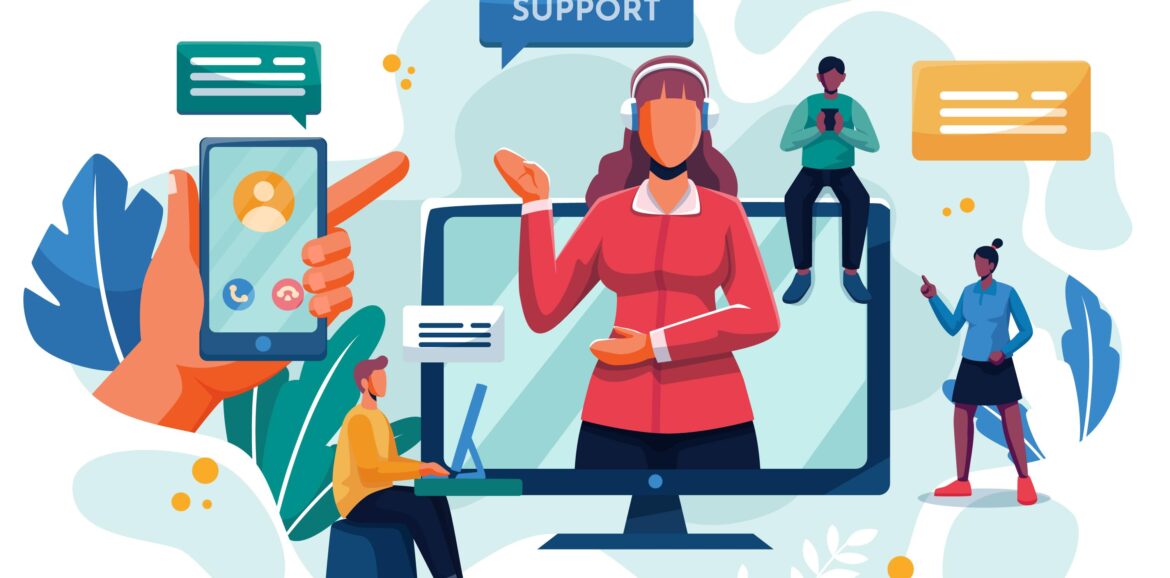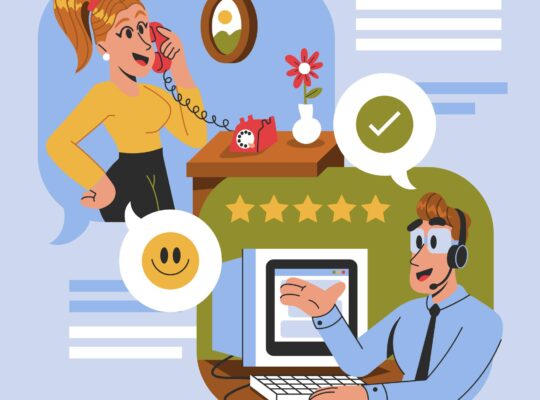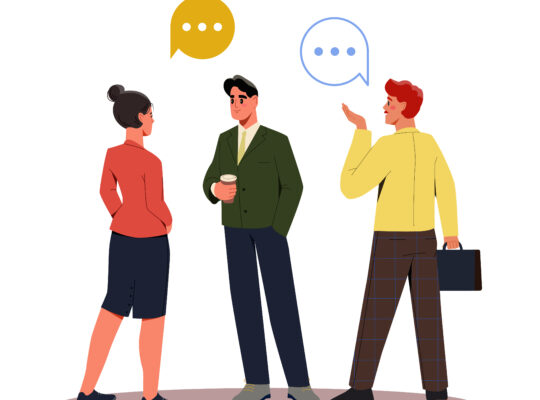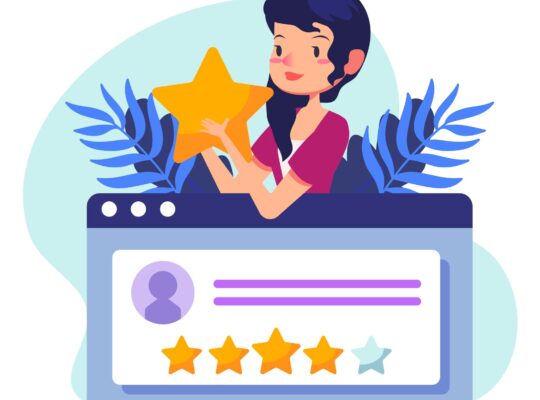| Measuring The Value of Customer Service | ||
| Instructor: Brad Cleveland | ||
| Released: 9/19/2019 | Course Details 1h12m Intermediate | |
| Skills Covered ROI Strategies Customer Service Management | Course Link | |
| Professional Certifications and Continuing Education Units (CEUs) N/A | ||
| Understanding the value of customer service, and being able to measure that value, will empower you to demonstrate return on investment (ROI) for your organization. Learn how to quantify the value of customer service, then dive into methods that apply to your unique environment. This course is designed to provide a perspective on this multifaceted topic and equip you and your team to make decisions that are right for your customers and your organization. Learning objectives – Defining value and ROI in customer service – Characteristics of an effective customer service approach – Customer lifetime value and loyalty – Brand promotion and referrals – The value of operational improvements – Product and service innovation – Engaging your employees – Compliance, safety, and legal costs – Key measures and calculations – Principles of effective budgeting – Customer service leaders and company leaders Source: LinkedIN Learning | ||
Principles of Value
The impact of customer service
Return on Investment (ROI)
An assessment of what is spent compared to what is gained
Well-Serviced Customers
- Buy more
- Increases customer lifetime value (CLV)
- Refer other customers
- Promote brand
Operational Benefits
- Innovates products and services
- Improves employee engagement
Poor Customer Service
- Customer defection
- Brand damage
- Safety and legal issues
- Negative impact on employees
The use and limits of an overall KPI
Key Performance Indicator (KPI)
- Customer Satisfaction
- Net Promoter Score
- Customer Effort Score
Customer Satisfaction (C-Sat)
- Surveyed customer experience rating
- “How would you rate your experience?”
- Non standard approach, varies across organizations, not easy to benchmark with the rest of the market.
Net Promoter (NPS) 10-point scale
- “How likely would you recommend us?”
- Promoters: 9 and 10
- Detractors: 6 and below
Overall NPS
- Express in number between -100 and +100
- 75% (Promoters) – 20% (Detractors) = 55 (NPS)
- NPS above zero are considered good
Customer Effort Score
- “How easy was it to resolve the issue?”
- Provides a 7-point scale from Very Difficult (1) to Very Easy (7)
- Good predictor of customer loyalty
- Not yet widely adopted for benchmark purposes
Customer Behavior
Surveys are great for customer feedback but they don’t determine the full customer behavior.
- Do they continue to buy?
- Do they try new products?
- Do they refer you to others?
- What are they saying about you?
Three overarching levels of value in customer service
How does customer service create value?
How could we get a better return on our investments in customer service?
Level 1 – Efficiency
- Reduces recurring problems
Level 2 – Customer Loyalty
- Leads to repeat business and improved profitability
Level 3 – Strategic Value
- Provides insight to sales and marketing
- Pinpoints and fixes quality problems (Manufacturing)
- Identifies innovation opportunities
Product and service innovation
Customer Service Can Help
- Pinpoint and fix quality problems
- Identify customer expectations, needs, and wants
- Set expectations and meet commitments
- Learn from each customer touchpoint.
- Build a cross-functional team
- Analyze reasons for customer service
- Communicate learning
- Identify trends
- Act on what you’re learning.
- Assess the impact of the improvements
- How many customer contacts are avoided?
- How are customer reviews and referrals influenced by improvements?
- What is the financial impact of new or improved products?
Operational improvements
Customer Service
- Sees how self-service systems can be improved.
- Identifies unmet expectations.
- Pinpoints opportunities to improve efficiencies
Employee engagement
Highly Engaged Employees
- 41% less absenteeism
- 24%-59% less turnover
- 17% more productivity
Important Factors To Consider
- Attendance
- Worked Hours / Scheduled Hours = Attendance Rate
- Retention
- # Additional Retained Positions x Staff Replacement Cost = Value Increased Retention
- Productivity
- Additional Hours x Number of Reps x Average Hourly Rate = Productivity Value
The Benefits of Effective Customer Service
Customer lifetime value (CLV)
Customer Lifetime Value (CLV)
CLV measures how valuable a customer is over an unlimited timespan.
Verify what CLV method your company uses.
Basic Approach
- Determine the average annual sales.
- Total Sales / Number of Sales = Average Sale (Avg Sale)
- Determine the frequency of customer purchases
- Annual Number of Purchases / Unique Customers = Purchase Frequency (PF)
- Estimate the customer life expectancy (CLE)
- Varies depending on product or services.
- Determine customer lifetime revenue
- Avg Sale x PF x CLE = Customer Lifetime Revenue
- Customer Lifetime Revenue – Direct Costs = Customer Life Value (CLV)
Brand promotion
- Know how new customers find you.
- Calculate the value of brand promotion
- # of New Customers from Brand Promotion x CLV = Value of Brand Promotion
- Estimate the role good service played in brand promotion.
Referred customer value
Calculate the Average Annual Purchase Amount from Referred Customers
- Invoicing
- Point of Sale systems
Annual Purchases from Referred Customers x CLE = Customer Referred Revenue (CRR)
Customer Referred Revenue – Direct Costs = Referred Lifetime Value (RLV)
(RLV – CLV) / CLV = Referred Incremental Rate
How much of that referred business came from good customer service?
Referred Incremental Value x % Due to Customer Service =
Customer Service’s Referred Incremental Value
Product and service innovation
Customer Service Can Help
- Pinpoint and fix quality problems
- Identify customer expectations, needs, and wants
- Set expectations and meet commitments
- Learn from each customer touchpoint.
- Build a cross-functional team
- Analyze reasons for customer service
- Communicate learning
- Identify trends
- Act on what you’re learning.
- Assess the impact of the improvements
- How many customer contacts are avoided?
- How are customer reviews and referrals influenced by improvements?
- What is the financial impact of new or improved products?
Operational improvements
Customer Service
- Sees how self-service systems can be improved.
- Identifies unmet expectations.
- Pinpoints opportunities to improve efficiencies
Employee engagement
Highly Engaged Employees
- 41% less absenteeism
- 24%-59% less turnover
- 17% more productivity
Important Factors To Consider
- Attendance
- Worked Hours / Scheduled Hours = Attendance Rate
- Retention
- # Additional Retained Positions x Staff Replacement Cost = Value Increased Retention
- Productivity
- Additional Hours x Number of Reps x Average Hourly Rate = Productivity Value
The Costs of Poor Service
Customer defection
Bad experiences = lost revenue, defections, negative publicity
Source: Accenture, Dimensional Research
It can be 5 to 25 times expensive to acquire a new customer than to keep an existing one.
Customer Attrition Calculation
End Customer Count – Begin Customer Count – New Customer count = Customer Attrition
Customer Attrition x CLV = Lost Value
Customer Attrition / Begin Customer Count = Customer Attrition Rate
Some customers move away and therefore are no longer customers. You need to analyze the data to better determine the reason for customer defection.
Brand damage
Poor customer service leads to low reviews. Negative posts lead to fewer customers.
Examples
- A gain of a star = 5-9% revenue increase.
- 1% reputation increase in a hotel reputation score can lead to a 6.9% increase in booked room, and 11% increase in room rates
- 59% of car buyers chose a dealer based on online reviews.
Customer Lost Due To Bad Reviews x CLV = Cost of Bad Review
Recurring problems
Evaluate the time the agents spend on recurring problems daily multiplied by frequency and the cost of service to determine the impact on the organization. If a cost is in the mid-range, review to determine the break even point from providing the solution.
Compliance, safety and legal
Effective customer service can spot potential trouble.
Identifying Risks
- Fines
- Lawsuits
- Suspensions
- Brand damage
- Bankruptcy
Employee dissatisfaction
Good Service Obstructions
- Policies
- Lack of authority
- Constant change
- Conflicting goals
- Inferior technology
New Hire Cost x # Employees Who Leave x Disengagement % = Disengaged Turnover Cost
Building Your Case
Principles of effective budgeting
Budget
A summary of proposed or agreed-upon expenditures for a given period of time, for specified purposes.
Effective Budgeting
- View as an opportunity
- Focus on results.
- Use as an extension of resource planning.
- Maximize cross-functional resources.
- Ensure the process is honest.
- Highlight investment opportunities.
- Make it human.
Justifying the customer service budget
Building Blocks
- Anticipated workload
- Calculate resources needed
- Facilitates a conversation on COI – Cost of Inaction
Cost of Inaction (COI)
- Quantify brand damage
- Explain financial impact of ongoing problems
- Remind about negative effects on employees
- Quantify risks of non-compliance
Impact of Customer Service
- Customer lifetime value
- Brand promotion
- Referred customers
- Improved efficiency and productivity
- Employee engagement
Only include one year of value against expenditures.
Evaluating improvement initiatives
- Evaluation and Acquisition Phase
- Travel costs
- Procurement costs
- Implementation Phase
- Internal Costs
- Project preparation
- Acquired technology
- Pilots and training
- External Costs
- Implementation support
- Internal Costs
- Operation and Maintenance Phase
- Increased personnel time
- Licensing fees
- Maintenance fees
View impact from a positive perspective. Focus on employee retention instead of employee turnover.
High-Impact Values
- Increased customer lifetime value
- Increased brand promotion
- Increased customer referral value
- Operational improvement savings
- Savings from addressing recurring problems
Using return on investment (ROI)
Calculating ROI
- Calculate the anticipated costs for the project.
- Sum up the project benefits.
- Compare the inflow and outflow of cash.
Overcoming ROI objections
Avoid numbers that others immediately discount as inaccurate. Don’t present returns that sound too good to be true. Be realistic in your cost. Avoid presenting numbers with errors. Be ready to explain the numbers.
| Remember! To experience the full benefit of this guide, I highly recommend you watch the full training session. |






